|
Aside from big bidding, the recent online sale of a City of Lincoln Raid Welfare badge for more than £110 perhaps shows a sign of the gradual appreciation of what has often been viewed as one of the less glamorous - if that’s the right word - of the ARP and CD services. Apart from a famous scene where a rest centre is blown up in the 1969 epic film Battle of Britain, the post-raid/raid welfare services are often overlooked in post-war retellings of the Blitz, even though they played a vital role. But, perhaps surprisingly, that’s not just a modern-day omission – it was also an oversight at the time. Whilst preparations had been planned for up to four years before the war, as the title Air Raid Precautions suggests, most consideration had gone into measures before and during air attack, such as shelters, gas masks, response services etc, with little consideration into what happened after the all clear. Taking Leicester as an example, astonishingly, records reveal the Midlands city’s post-raid services were formed only as an afterthought, following the main Blitz. At the war’s start, it was simply suggested Leicester’s parks be kept open during raids, where those bombed-out could congregate. Whilst some church halls etc. provided temporary shelter for the homeless when the city suffered its main blitz in November 1940, it was only two months afterwards that Leicester’s ARP Controller announced in the local press that the city’s post-raid provision had been 're-modelled to cope with air attack'. Records then show a swing throughout 1941 from the previous focus on ARP to post-raid services, with development of the city’s rest centres, emergency feeding centres and other forms of assistance. And this was not just limited to Leicester, but can be seen across Britain: indeed, the term 'ARP' was largely replaced with the broader 'Civil Defence' (CD) in September 1941. With each city requiring thousands of personnel to staff the various refuges and feeding stations, the post-raid services eventually became one of the biggest branches of CD. Yet, due to clothing restrictions, most members were not entitled to standard CD uniform. Instead, they were issued with a standard national Rest Centre Service pin badge. However, as we have seen, rest centres were only one part of the post-raid welfare services, so some areas recognised this with the issue of a different enamel badge. The most prominent was No.3 (North Midlands) CD Region, comprising Lincolnshire, Derbyshire, Nottinghamshire, Leicestershire and Northamptonshire. At a meeting of Leicester CD Committee on September 16, 1942, it was reported: "Regarding the issue of a new type of national badge to Rest Centre volunteers. An initial supply of 600 badges has been requested, which will be issued free, but subject to payment by the volunteer of 1/- [£2.75] in the event of loss. 'However, issue of the new badge makes no provision for remaining volunteers in the Post-Raid Welfare Services and the adoption of a local badge is recommended. A specimen is submitted, which can be purchased for 1/2d [£2] each." Initially an order for 800 badges was made: however, about a month later, it was ascertained at least 1,736 were needed: "An amended estimate has been obtained from Messrs. Fattorini Ltd for the larger supplies at the rate of 11d [£2.50] per badge. 3,000 passes for Welfare Service volunteers (including Rest Centre personnel) will be required, costing £8.10.0d [£450]. Total cost of badges and passes is £100.3.4d [£5,280]." Other CD Committees in the region also purchased enamel badges, most notably in Lincolnshire, with the designs all fairly similar. Around the year 2000, I recall it was said that a carrier bag full of hundreds of County Borough of Grimsby Raid Welfare badges had been discovered and they remain the most commonly seen today, fetching around £10. For years, there was little interest amongst collectors in these raid welfare badges (and armbands and paperwork) and they were not really a seller. However, the badges for other areas of Lincolnshire, such as Holland, Lindsey, Kesteven and Lincoln, are comparatively scarcer and, with the recent rocketing appreciation in Home Front militaria, as we have seen last week, prices have risen, with the average badge around £50. This mirrors a rise in sums paid for items relating to that other overlooked Cinderella CD service, the Fire Guard. So, perhaps, together with the post-raid services, recognition and credit is finally being paid.
Information for the above blog has been drawn from Tested By Bomb And Flame: Leicester Versus Luftwaffe Air Raids, 1939-1945 by Austin J. Ruddy, Halsgrove Books, 2014.
1 Comment
A couple of photographs showing wardens from the Trafford Road area in Norwich. We can get a rough date from the uniforms and armbands shown. I would say the photo was taken after July 1940 (there's a chap wearing the rainbow armband far right) but pre-summer 1941 (no evidence of battledress being worn just bluette overalls).
Photos courtesy of Jonathan Emery. Jonathan's maternal grandfather, Sidney Weston (shoe and boot maker/repairer) is sat second right on the floor; sadly, he passed away in April 1942, aged 48. An armband for a member of a Rescue & Demolition squad. These squads, mainly comprised of builders and carpenters, would later be reorganised into Rescue Squads and then further divided into Light Rescue and Heavy Rescue teams (the latter here more in line with the shoring and demolition of buildings).
A similar design of armband in blue has been noted for an "Assistant To Controller" (see the bottom of this page). The common Civil Defence rainbow armband introduced in the summer of 1940 appears with a number of additions - for example, Rest Centre, Controller, Surveyor etc. The below example is for the leader of a rescue, shoring and demolition squad.
Image courtesy of Steve Taylor ARP Pattern 39 armlets featuring FIRE GUARD in gold/yellow lettering on dark blue cotton were introduced in August 1941. 1.8 million were ordered, as well as 1 million patches for sewing over the existing SFP armlets worn by Street Fire Parties.
The yellow script versions appear in two styles, one screen printed on cotton similar to the Civil Defence 'rainbow' armband, and the other on a cotton twill fabric that bleeds FIRE GUARD through the material. The white lettering version appeared in 1943, on a light cotton twill fabric, which also bleeds through the fabric. |
Please support this website's running costs and keep it advert free
Categories
All
Archives
June 2024
|
|
|
Copyright © 2018–2024
|




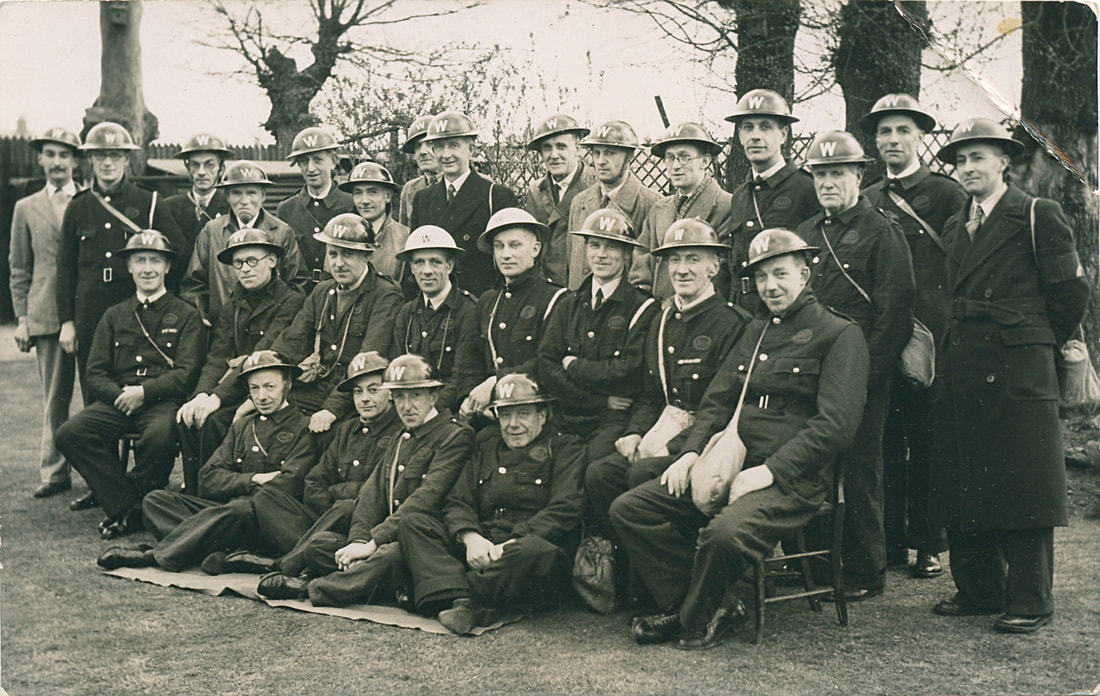
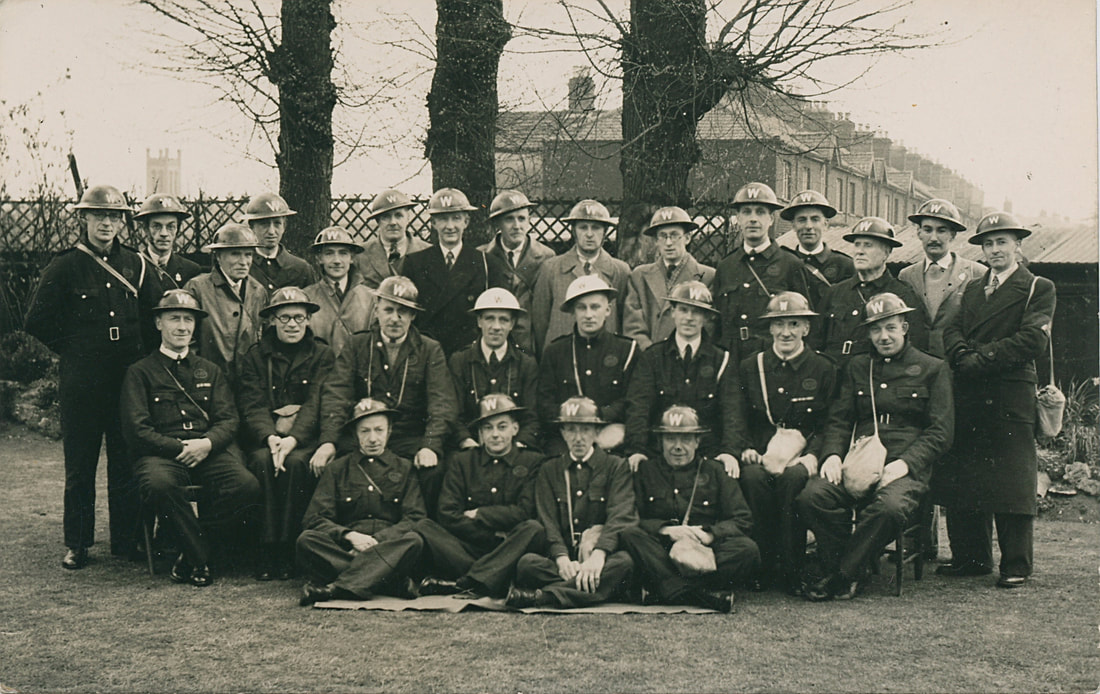
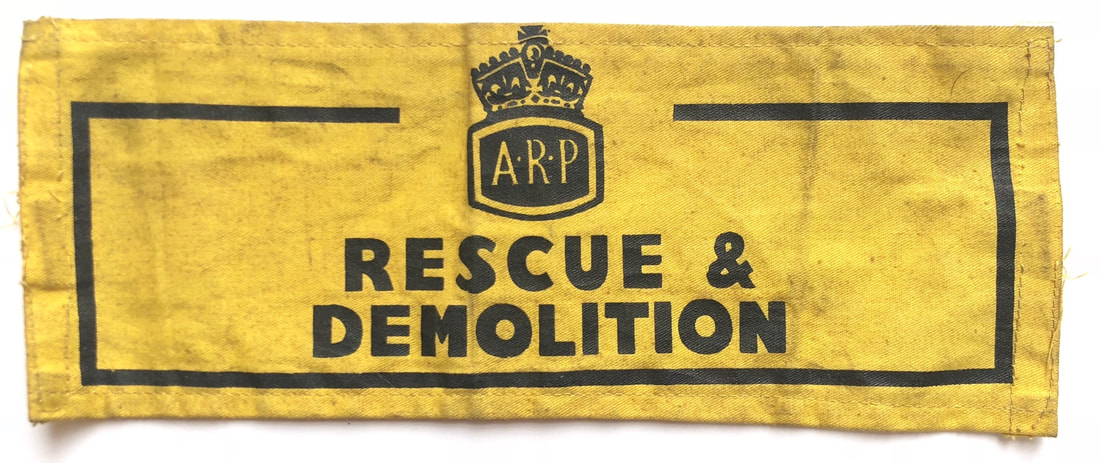
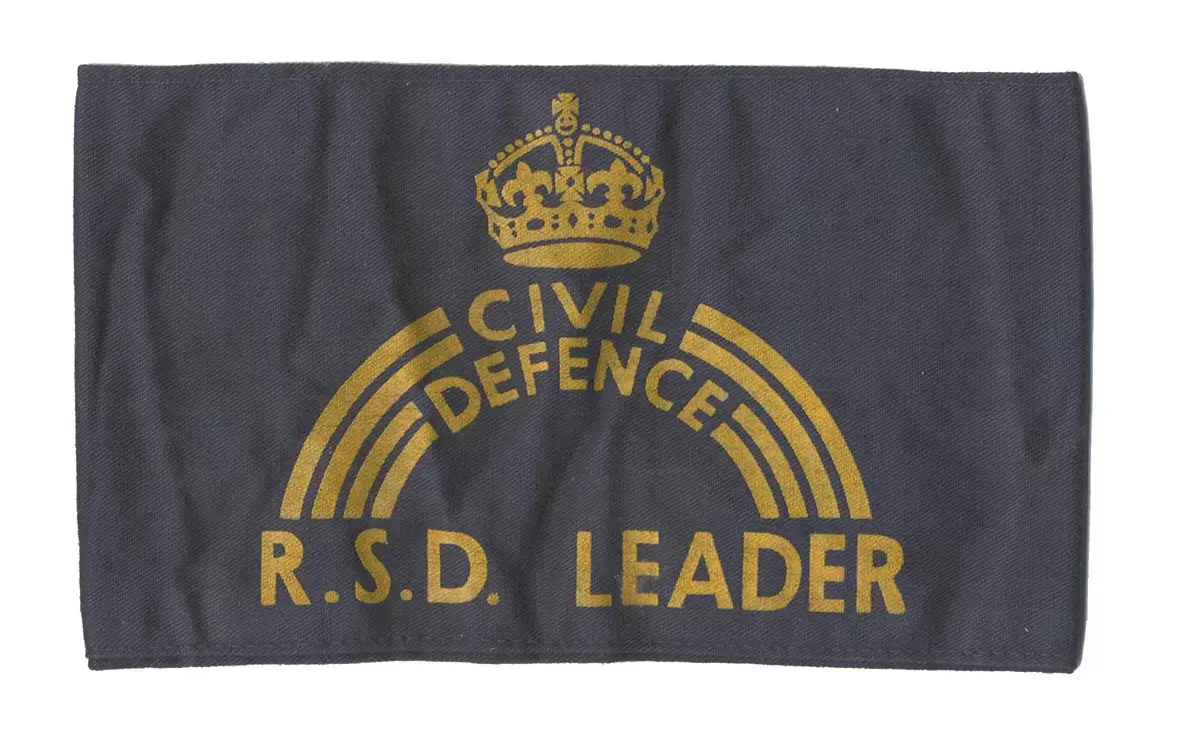
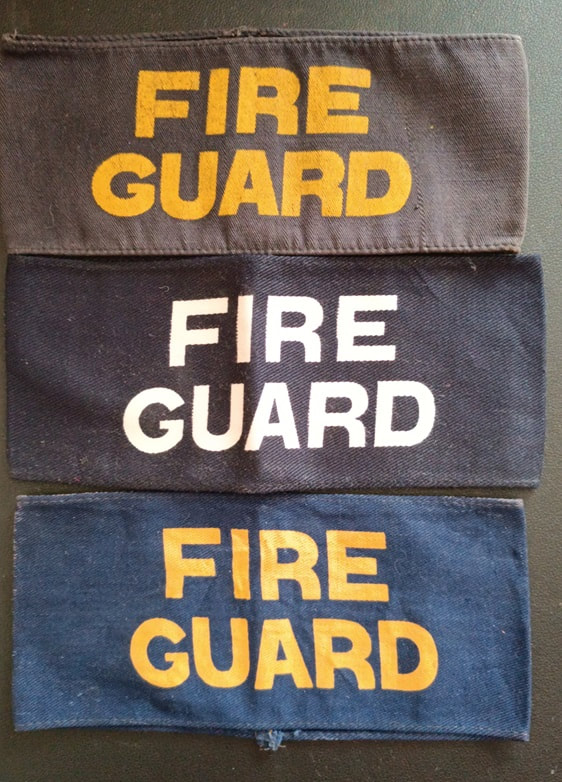
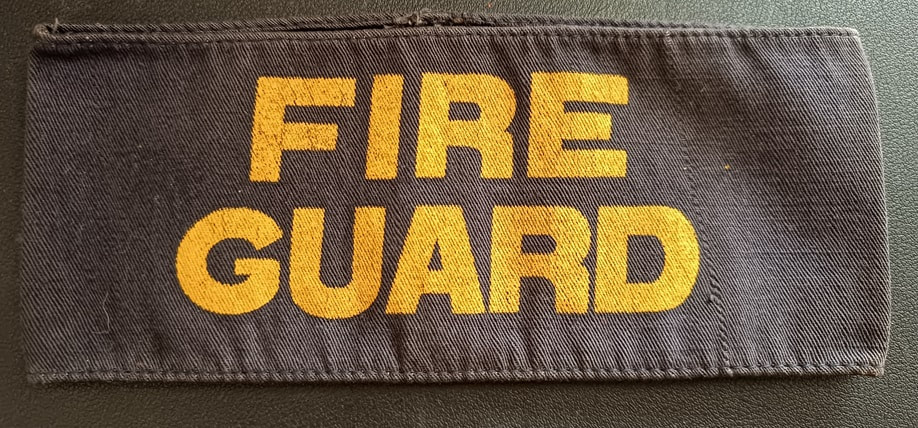
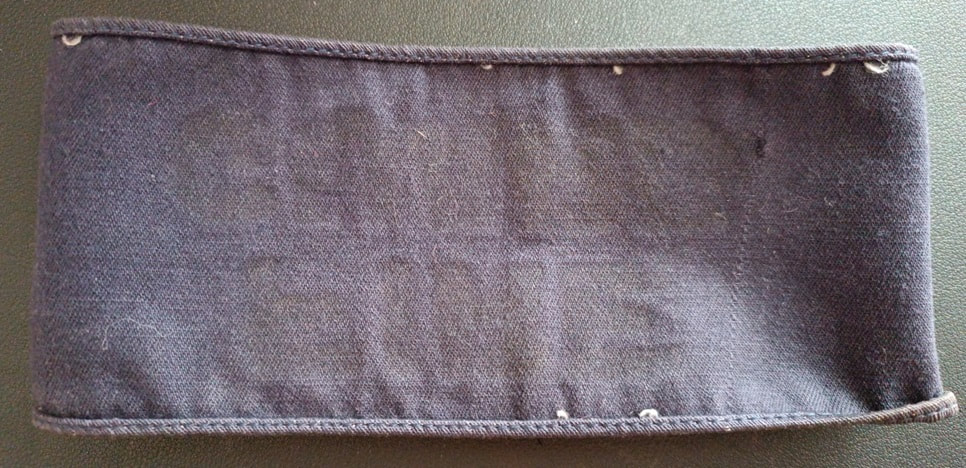
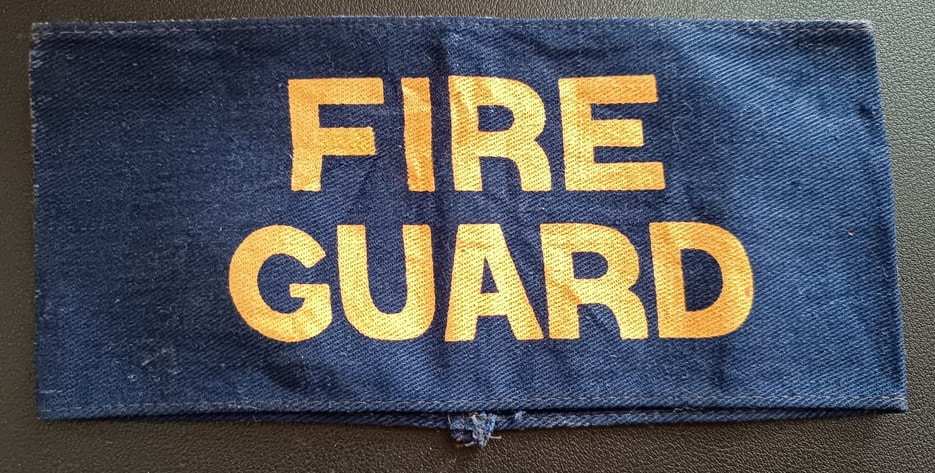
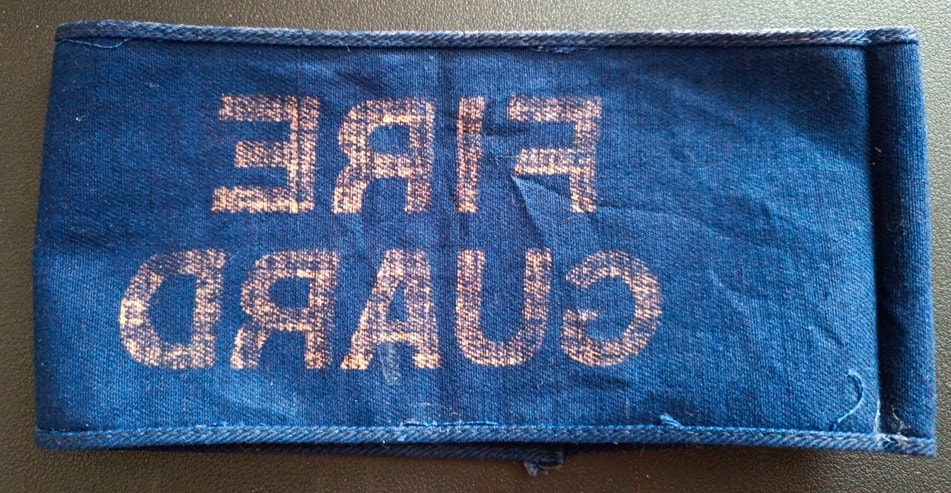
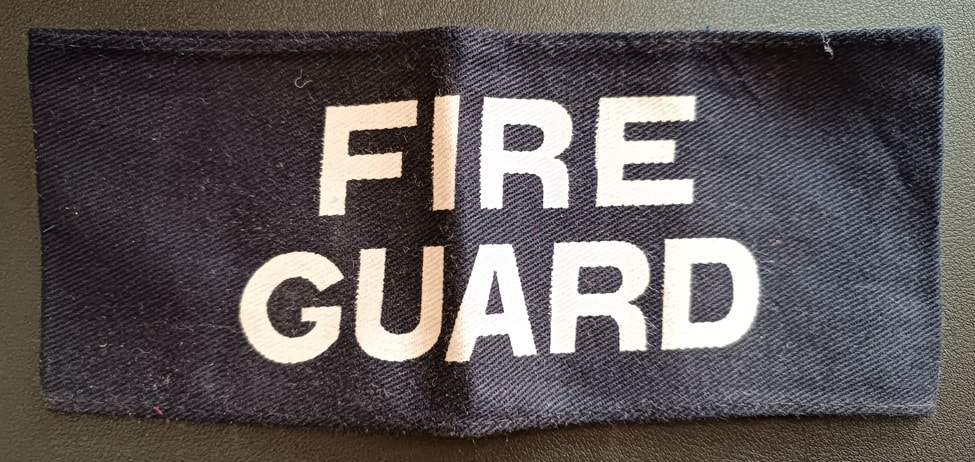
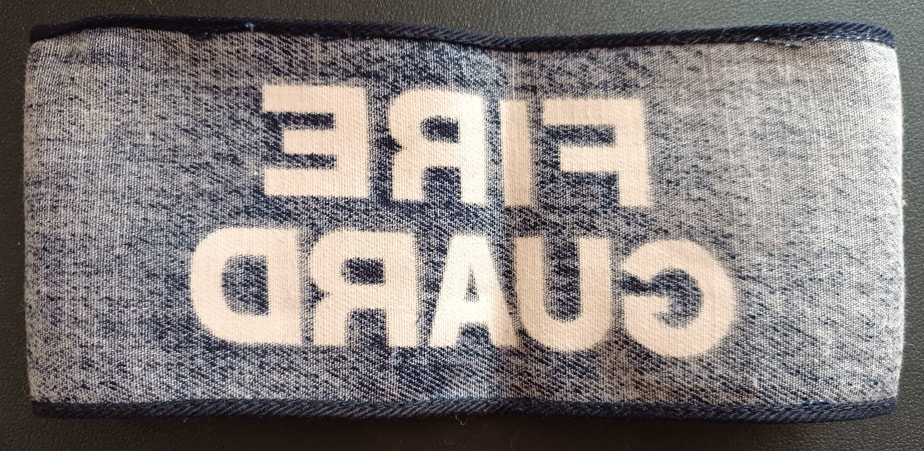
 RSS Feed
RSS Feed